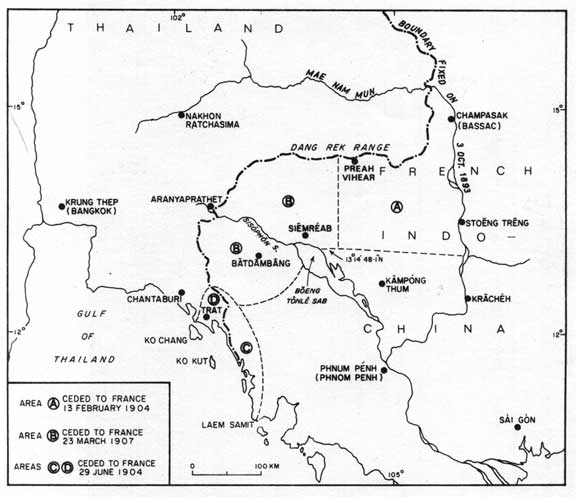D
Dave The Dude
Guest
Cabinet firm on Thailand's stance on Preah Vihear
Mr Suwit is in Brasilia, Brazil's capital, to attend the WHC meeting, which is due to discuss Cambodia's management plan for the 1,000-year-old Hindu temple.
Mr Abhisit said the cabinet on Wednesday agreed that if the WHC went ahead with consideration of Cambodia's proposal, Mr Suwit should walk out and boycott the vote.
Mr Suwit should also review Thailand's WHC membership if it looked likely to endorse the management plan.
The prime minister stressed that even if the WHC endorses Cambodian management of the site, it would not have any effect on the dispute between Thailand and Cambodia.
Cambodia would not be able to use the WHC endorsement to manage the overlapping territory of 4.6 square kilometres which is still in dispute and has not been demarcated, Mr Abhisit said.
He said Thailand would try to solve this problem without the use of force, but the Thai army was ready to protect Thai sovereignty over its territory.
It might take as long as a year to withdraw WHC membership, because the matter would require approval from the House of Representatives.
But if Thailand withdrew from the WHC, the listing of Preah Vihear temple as a world heritage site would not be able to proceed, Mr Abhisit said.
Therefore, Thailand would persist in its attempt to delay the WHC's consideration of the Cambodian proposal and ask the United Nations Educational, Scientific and Cultural Organisation (Unesco) to adhere to its intention of promoting peace, not conflict, the prime minister said.
Deputy government spokesman Supachai Jaisamut said the cabinet resolution followed a fax from Mr Suwit on Wednesday morning asking that it confirm Thailand's stance.
Thailand has made clear that it will not cooperate with the WHC if it agrees to the management plan for the Preah Vihear temple, because it infringes on the disputed border area.
- Published: 28/07/2010 at 05:12 PM
- Online news: Local News
Mr Suwit is in Brasilia, Brazil's capital, to attend the WHC meeting, which is due to discuss Cambodia's management plan for the 1,000-year-old Hindu temple.
Mr Abhisit said the cabinet on Wednesday agreed that if the WHC went ahead with consideration of Cambodia's proposal, Mr Suwit should walk out and boycott the vote.
Mr Suwit should also review Thailand's WHC membership if it looked likely to endorse the management plan.
The prime minister stressed that even if the WHC endorses Cambodian management of the site, it would not have any effect on the dispute between Thailand and Cambodia.
Cambodia would not be able to use the WHC endorsement to manage the overlapping territory of 4.6 square kilometres which is still in dispute and has not been demarcated, Mr Abhisit said.
He said Thailand would try to solve this problem without the use of force, but the Thai army was ready to protect Thai sovereignty over its territory.
It might take as long as a year to withdraw WHC membership, because the matter would require approval from the House of Representatives.
But if Thailand withdrew from the WHC, the listing of Preah Vihear temple as a world heritage site would not be able to proceed, Mr Abhisit said.
Therefore, Thailand would persist in its attempt to delay the WHC's consideration of the Cambodian proposal and ask the United Nations Educational, Scientific and Cultural Organisation (Unesco) to adhere to its intention of promoting peace, not conflict, the prime minister said.
Deputy government spokesman Supachai Jaisamut said the cabinet resolution followed a fax from Mr Suwit on Wednesday morning asking that it confirm Thailand's stance.
Thailand has made clear that it will not cooperate with the WHC if it agrees to the management plan for the Preah Vihear temple, because it infringes on the disputed border area.


